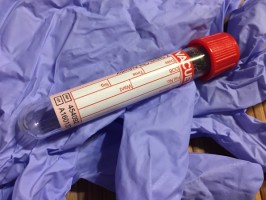The magic of a blood test
Blood tests can give us a wealth of information about the health of your pet. They provide an insight into the health of many organs, help detect disease and can also confirm if your pet is safe to undergo anaesthesia.
From a blood test, we can work out if your pet is dehydrated, has underlying kidney disease or liver changes, and assess your pet’s red and white blood cells. All of this helps improve the level of care we can provide to your pet.
So, what actually happens when we take blood from your pet?
Most blood samples are taken from the jugular vein in the neck. This vein is large enough to provide a good sample and allows us to collect the blood as quickly as possible. This is important as blood will start to clot if it is not collected swiftly and this can affect the results.
Most pets are also more relaxed when blood is taken from their jugular vein and there is minimal, if any discomfort. If necessary, a smaller sample can be obtained from a vein in the leg but these veins are preferably ‘saved’ for administering injections or IV fluids.
Once the blood has been collected we place pressure over the vein to prevent any bruising. Your pet should not require a bandaid but a liver treat (instead of a lollipop) is a must!
The blood is placed into tubes appropriate for required tests. Some tests can be run on machines we have in house but there are certain tests that require more extensive equipment and so the blood sample is sent to an external laboratory.
Blood tests are an essential part of good veterinary medicine and can be critical when diagnosing and managing diseases. You should always ask us if you have any questions or are worried about the health of your pet.

